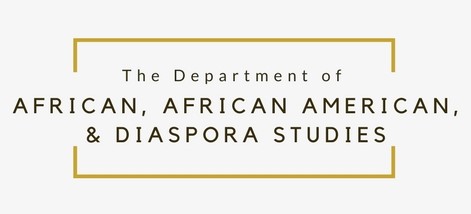COVID-19 Resources
College of Arts and Sciences – COVID-Conversations: Society, Politics and Economics Amid the COVID-19 Pandemic
Early Data Shows African Americans Have Contracted and Died of Coronavirus at an Alarming Rate
As of Friday morning, African Americans made up almost half of Milwaukee County’s 945 cases and 81% of its 27 deaths in a county whose population is 26% black. Milwaukee is one of the few places in the United States that is tracking the racial breakdown of people who have been infected by the novel coronavirus, offering a glimpse at the disproportionate destruction it is inflicting on black communities nationwide.
In Michigan, where the state’s population is 14% black, African Americans made up 35% of cases and 40% of deaths as of Friday morning. Detroit, where a majority of residents are black, has emerged as a hot spot with a high death toll. As has New Orleans. Louisiana has not published case breakdowns by race, but 40% of the state’s deaths have happened in Orleans Parish, where the majority of residents are black.
Why Don’t We Know Who the Coronavirus Victims Are?
On Friday, the Illinois Department of Public Health became one of the few state offices to release some racial data. And the data showed a pandemic within the pandemic: African Americans are significantly overrepresented in infection rates in Illinois, while whites and Latinos are significantly underrepresented. African Americans make up 14.6 percent of the state population, but 28 percent of confirmed cases of the coronavirus. White people comprise 76.9 percent of the Illinois population, and 39 percent of the confirmed cases. Latinos comprise 17.4 percent of the state population, and 7 percent of the cases. In Illinois, Asian Americans were the only racial group without a significant disparity between their state population, at 5.9 percent, and confirmed cases, at 4 percent. (Nearly a third of cases were recorded as “other” or left blank. Illinois did not release racial data on Native Americans, or on testing, hospitalization, and death rates by race.)
Black people make up 12% of Michigan’s population — and at least 40% of its coronavirus deaths
The coronavirus is infecting and killing an alarming proportion of Black residents in Michigan.
Black people make up 12% of Michigan’s population. But of the state’s 417 coronavirus deaths, 40% are Black, 26% are white, 30% are unknown, and 4% are mixed race or other, according to data released Thursday by the Michigan Department of Health and Human Services (MDHHS).
Of the nearly 11,000 who tested positive for the coronavirus, 35% are Black, 25% white, 34% are unknown. An additional 6% represent other races.
The Myth of Black Immunity: Racialized Disease during the COVID-19 Pandemic
As the novel coronavirus 2019 (COVID-19) pandemic sweeps across the world, troubling associations between race and disease have gone viral. On social media, theories of Black people’s immunity to the novel coronavirus spread rapidly and widely, with the initially small number of cases in Africa often cited as evidence. Since then, the virus has spread to the continent and will surely exacerbate already compromised health systems.
The Coronavirus’s Unique Threat to the South
In a matter of weeks, the coronavirus has gone from a novel, distant threat to an enemy besieging cities and towns across the world. The burden of COVID-19 and the economic upheaval wrought by the measures to contain it feel epochal. Humanity now has a common foe, and we will grow increasingly familiar with its face.
Racism in the Time of COVID-19
In December 2019, the first cases of “a pneumonia of unknown cause” were reported in Wuhan, China, a port city of 11 million people in the central Hubei province. As COVID-19 — an infectious disease caused by the novel coronavirus SARS-Cov-2 — spread and reached the status of a pandemic by March 11, 2020, so did racist and xenophobic rhetoric around its origins, and instances of racial stigmatization and violence against people of Asian descent. The bigoted rhetoric of U.S. President Trump who, in official statements to the national press dubbed COVID-19 the “Chinese Virus,” further fueled these sentiments and acts of violence.
COVID-19 in North Carolina
The coronavirus can hit anyone. But as North Carolina and other states around the country are discovering, it doesn’t hit everyone equally. The latest numbers released by the North Carolina Department of Health and Human Services (DHHS) show that the state has confirmed 3,651 positive cases of coronavirus, with 65 deaths and 398 people currently hospitalized. Overall, the state has completed nearly 48,000 tests, and cases have been found in 91 out of 100 counties.
Black Communities Are on the ‘Frontline’ of the COVID-19 Pandemic. Here’s Why
Every new day of the coronavirus pandemic has brought with it a dizzying amount of change. Teachers are now forced to explain class projects to their students over Zoom, while friends and family use FaceTime to inquire about loved ones, alternating between laughter and anxiety while holding pixelated drinks in their hands. Asian Americans have reported hate crimes and assaults in droves with mounting xenophobia driven in part by the president’s branding of the disease as the “Chinese virus.” A record 3.3 million people filed for unemployment last week as restaurants, bars, salons, laundromats, clothing shops and bookstores across the country shuttered their doors. As a recession looms, more are guaranteed to follow. Sadly, as of Monday night, nearly 160,000 cases had been confirmed in the United States, killing more than 2,000 people.
When the Country Sneezes, Black Women Catch the Flu. What Happens With COVID-19 in the United States?
Truly investing in the health and well-being of Black women would reform our health-care system and obviate the inevitable scramble to address public health crises like COVID-19.
Outcry over racial data grows as virus slams black Americans
As the coronavirus tightens its grip across the country, it is cutting a particularly devastating swath through an already vulnerable population — black Americans.

